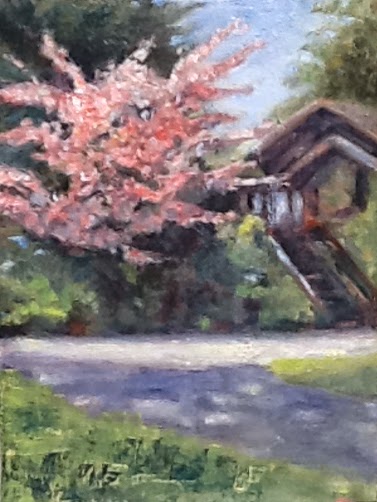I find studying values fascinating and I loved working on this little all white pitcher.
I used Ivory Black and Titanium White oil paint. I could have made my own black but decided since I had a tube of black I would just use it.
My support was a piece of 1/4" plywood that I found in the garage and had my husband cut it to 6" x 6". I had primed it and had given it a base of some peachy color I had. In this photo you can see all the plywood grooves thru the paint in the photo below ... that was fine with me, I wasn't trying to make a beautifully rendered piece of art, I was only attempting to get the values right.
 |
| This is a close up of Martha's little pitcher. Its aproximately 5" tall and 5" wide. |
In the above photo you see the little pitcher sitting on a white piece of foam core inside a small cardboard box. Looking at the pitcher like this I think I see the values very easily.
 |
| My set-up for my value study. |
~~~~~~~~~~~~~~~~~~~~~
Just about the time I was reworking my values for the 3rd time I was able to watch David Gray on Periscope while he was teaching a 4 day workshop in Langley, WA. He has some great videos on youtube you might enjoy watching.























